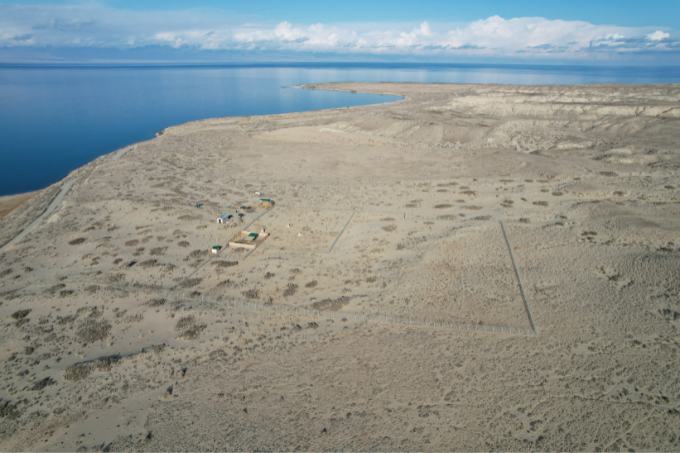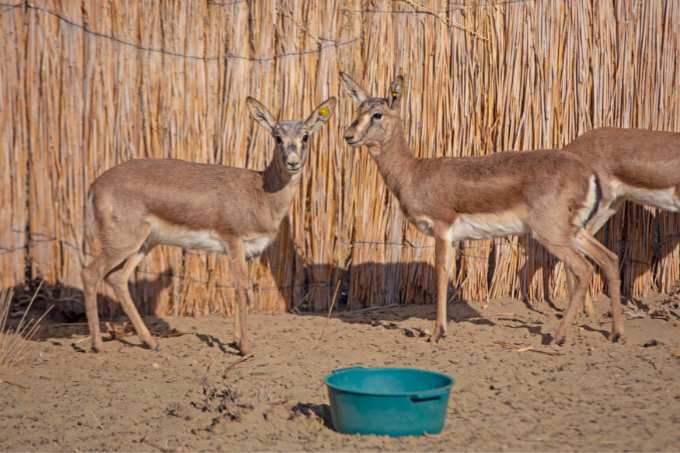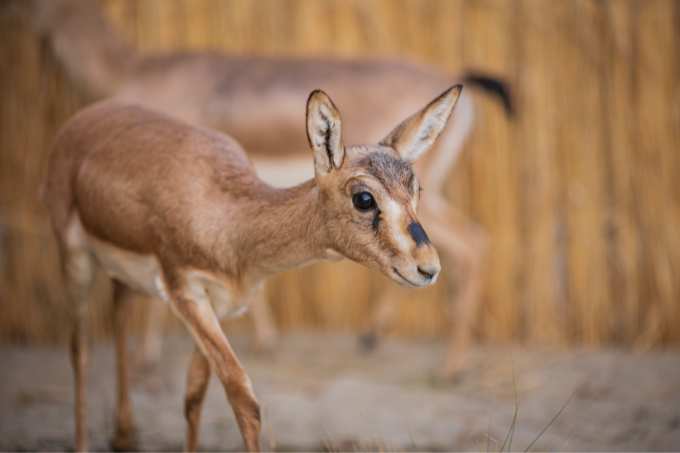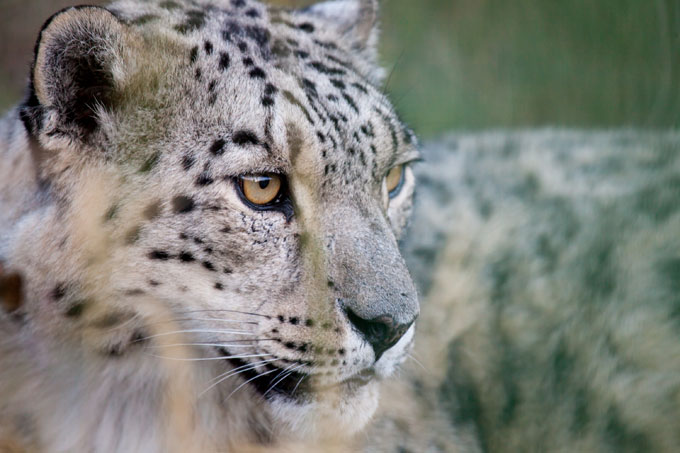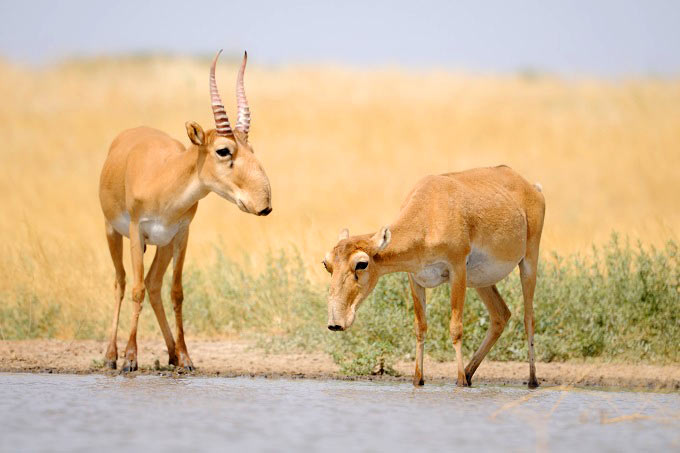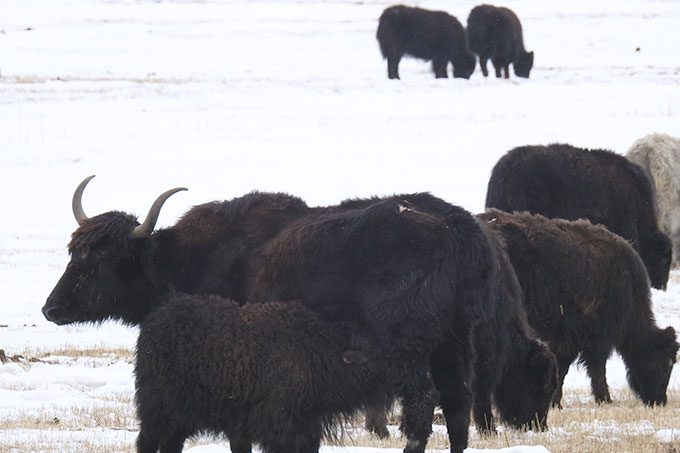NABU has expanded the goitered gazelle reintroduction enclosure to 12 hectares - photo: NABU/ Ivan Turkovskiy
Return of the goitered gazelle
Hope for an endangered species
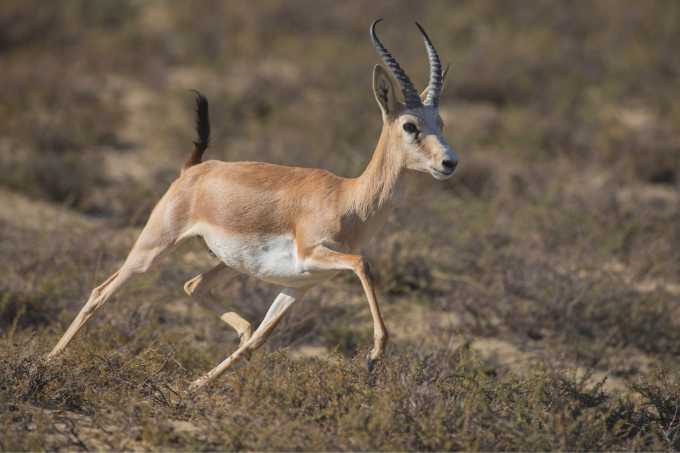
Goitered gazelle in the reintroduction enclosure - photo: NABU/ Ivan Turkovskiy
The starting point that our team from Kyrgyzstan reaches in December is known as „Jeyran“ and consists of a protected area with a breeding station. It lies in the neighboring country of Uzbekistan, approximately 40 kilometres from Bukhara. „Jeyran“ means „goitered gazelle“ - a fitting name, for entire herds of this small Asian gazelle species roam the 16,500 hectare refuge. „It is like observing them in the wild“, reports Ivan Turkovskiy, photographer and nature conservationist from the Kyrgyz Argali Foundation. He is part of the six-person team that has come here with an ambitious goal: to reintroduce the goitered gazelle in neighboring Kyrgyzstan, where they were once native. The biologist and gazelle expert Valentin Soldatov was born at the Jeyran station, and leads the visitors around the facility. As he explains, the breeding centre was established in 1977, to preserve rare and endangered mammal species. „In addition to viable populations of the goitered gazelle, the centre has also successfully reintroduced the onager, the Asiatic wild ass.“ The next goal is a similar success with the goitered gazelle in Kyrgyzstan, where the species became extinct in the wild as a consequence of habitat loss and - above all - poaching.
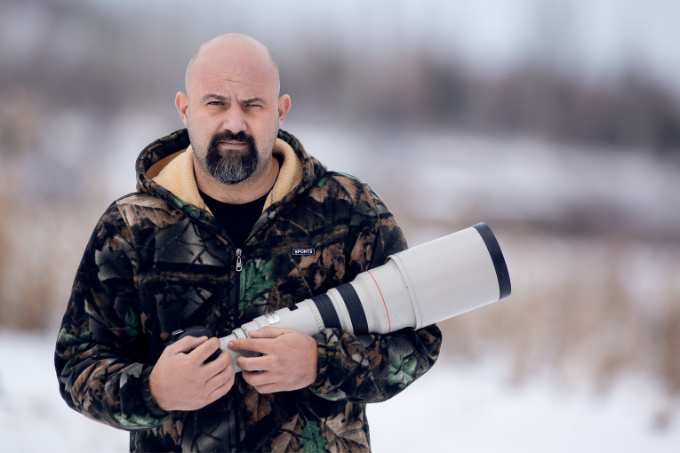
Ivan Turkovskiy
Ivan Turkovskiy, photographer and nature conservationist from the Kyrgyz Argali Foundation, accompanied and documented the goitered gazelles on their long journey.
Painstaking preparations
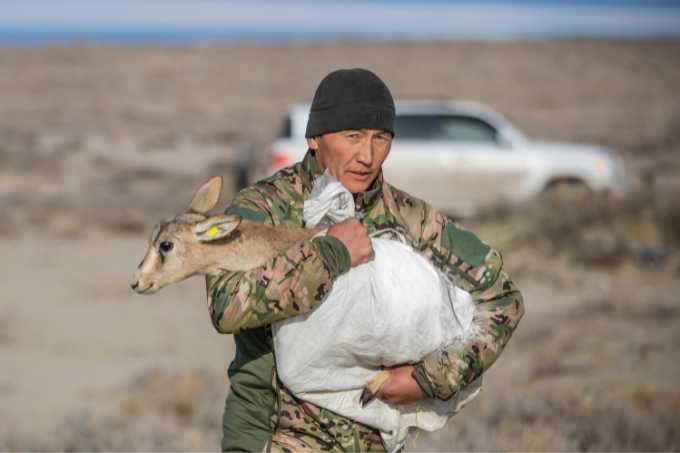
The transport sacks were custom-built for the goitered gazelles. None of the animals were injured on their journey to Kyrgyzstan - photo: NABU/ Ivan Turkovskiy
Twelve young, strong animals were selected to become the founding stock of a new population of goitered gazelles in Kyrgyzstan. „They have to be able to quickly adapt to their new surroundings, and also to endure the strain of the long journey“, explains Soldatov. Although the team made the 1,800 kilometre journey from Bishkek to Bukhara via Tashkent by plane, the return journey is made with two cars. The men prepare for the journey with painstaking care: They load hay into the cars, so the gazelles have something to eat on the road. „The animals don't need water for the trip“, says Turkovskiy. „As an inhabitant of the Asian steppes and semi-deserts, the goitered gazelle is able to go multiple days without water.“ The team then binds up the animals in cotton sacks - which were specially sewn for this transport mission and tailored to the size of the gazelles - so that they don't injure each other, and loads them into the vehicles.
Bureaucracy and bad roads
To travel by car from Uzbekistan to Kyrgyzstan, there are multiple possibilities. Turkovskiy and the rest of the team decide on a route that takes somewhat longer, but only contains one border crossing, rather than two. In order to cover the distance without long rest stops, the two cars travel with a total of six drivers, who rotate in shifts. Nonetheless, the drive is grueling. The roads are largely in bad shape, compounded by heavy snowfall, which worsens road conditions and visibility. „It wasn't actually the plan to carry out the transport in December“, explains Turkovskiy. „But it took many months until we received signatures on all the necessary documents.“ Unfortunately, he adds, the implementation of such a project requires not only willpower and financial resources, but also the navigation of numerous bureaucratic hurdles.
About the goitered gazelle
No gazelle species in the world lives further north than the goitered gazelle (Gazella subgutturosa). Their distribution area extends from the southern Caucasus region through Iran, southern Central Asia and the Arabian Peninsula , to the Gobi Desert and northern China. The International Union for Conservation of Nature (IUCN) estimates the numbers of the goitered gazelle at less than 49,000 adult individuals, trending downward. The species is therefore classified as vulnerable.
Species profileThe gazelles themselves also prove to be somewhat uncooperative. With their small, sharp hooves, they manage to tear the protective sacks on multiple occasions. The convoy has to frequently pull over and wrap the animals back up. A risky endeavor, as the gazelles do their best to escape their helpers. One of the team, it is established later, receives a broken rib from a flying hoof as a badge of honour for his troubles. A sign that the seemingly small and delicate ungulate is indeed able to defend itself successfully in the wild.
Hope for an endangered species
All are relieved when, after 1,860 kilometres and 48 hours on the road, the convoy reaches its destination: the NABU reintroduction facility on the shore of the high alpine lake Issyk-Kul, in northeast Kyrgyzstan. The centre is part of the reintroduction project that NABU has been implementing together with two Kyrgyz nature conservation foundations, „Argali“ and „Ilbirs“. The project was initiated by the National Working Group on Eurasia. 15 juvenile animals were already brought over from Uzbekistan during the pilot phase, shortly after the construction of the enclosure was completed. Now the twelve newcomers join them, in order to build a stable and genetically diverse population. Upon arrival, Turkovskiy and the rest of the team free the animals from their sacks and watch as they spring to their feet and start curiously exploring their new home. The exhaustion of the long but essential journey seems to melt away. In a few years, the first goitered gazelles will start to be released into the wild, where they will hopefully roam the Kyrgyz semi-deserts as their ancestors once did.
About the project
The project Reintroduction of the goitered gazelle in Kyrgyzstan is being implemented by our two Kyrgyz partners, the Argali Foundation and the Ilbirs Foundation. The project is accompanied by environmental education measures designed to combat poaching and illegal trade. The project partners plan to release the first goitered gazelles in 2026.
-
-
After arriving at the NABU reintroduction facility in the northeast of Kyrgyzstan, the animals explore their new home - photo: NABU/ Ivan Turkovskiy
-
An adorable success story: The first new offspring is born in NABU's reintroduction facility in May 2023. An important milestone on the path to a stable population - photo: NABU/ Ivan Turkovskiy
more nabu projects in central asia
Snow leopards are among the most endangered big cats on earth. Only 4,000 to 6,400 animals now live in the wild. NABU has been committed to the survival of snow leopards in Kyrgyzstan since 1999 and has extended its commitment to Tajikistan, Pakistan and Nepal. more →
Saiga antelopes are part of the steppe, just as bison are part of the prairie. Yet this rare animal only survives in five areas in Asia. NABU is helping to preserve the saiga in Kazakhstan with projects for community-based conservation and environmental education. more →

